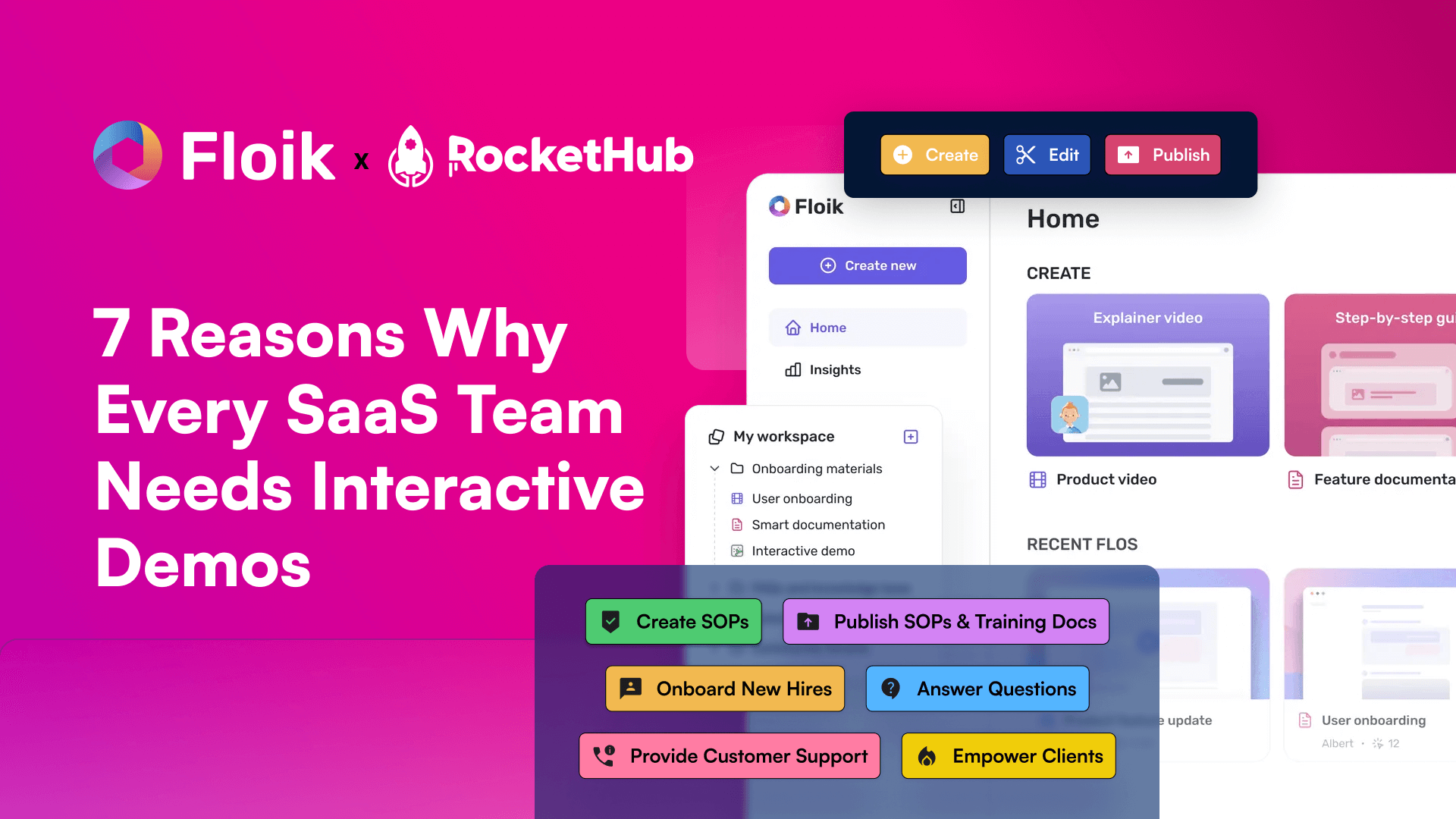
5 Steps to Automate & Streamline Business Processes to Stimulate Growth
- Angel Alfred
- April 6, 2023

Automation is a powerful tool that can help businesses save time, cut costs, and increase efficiency. By automating repetitive tasks, companies can free up valuable resources and focus on strategic initiatives that drive growth. In this blog post, we will outline five steps to automate and streamline business processes to boost efficiency and stimulate growth.
Importance of Automating and Streamlining Business Processes to Achieve Growth

Automating and streamlining business processes can play a critical role in achieving growth for businesses of all sizes. In today’s fast-paced business environment, automation has become a key driver of efficiency and productivity. By automating repetitive tasks and streamlining workflows, businesses can free up their staff to focus on higher-value tasks, such as innovation, strategic planning, and customer service.
One of the key benefits of automation is the reduction of human error. Automated processes are less prone to mistakes and can complete tasks more quickly and accurately than manual processes. This not only improves efficiency but also ensures consistency and quality, which can help businesses to build a positive reputation and increase customer satisfaction.
Another benefit of automating and streamlining business processes is the ability to scale operations more easily. As businesses grow, they may struggle to keep up with the increased demand for their products or services. By automating and streamlining key processes, businesses can scale their operations more efficiently and without adding significant costs.
Read: 5 Key Components of Extreme Revenue Growth For SaaS Companies
5 Steps to Automate & Streamline Business Processes to Stimulate Growth
Now let’s get to the meat of this article – the five steps we can take to automate and streamline business processes!
Identify Processes to Automate
Identifying processes to automate is an essential step toward streamlining business operations, reducing costs, and increasing productivity. However, not all processes are suitable for automation. Let’s move ahead and find out the importance of identifying processes that are ripe for automation, and examples of processes that can be automated.
Importance of Identifying Processes that are Ripe for Automation
Automating the wrong processes can be costly, time-consuming, and counterproductive. Therefore, it’s important to identify processes that are ripe for automation. The right processes should be repetitive, rule-based, and time-consuming. Automating such processes will free up employees’ time, increase accuracy and efficiency, and allow for a better allocation of resources.
Examples of Processes that can be Automated
Many business processes can be automated, including:
- Entering data from one system to another can be automated using the software.
- Invoicing and Payment Processing: Invoicing and payment processing can be automated using accounting software.
- Inventory management can be automated using inventory management software.
- Customer service tasks, such as answering common questions, can be automated using chatbots.
- Email marketing campaigns can be automated using marketing automation software.
Tips for Identifying Processes to Automate
Here are some tips for identifying processes to automate:
- Identify the most time-consuming, repetitive, and error-prone processes by conducting a process audit. A process audit will help you identify areas that are ripe for automation.
- Analyze metrics such as employee productivity, turnaround time, and error rates to identify areas that need improvement.
- Employees who are involved in a process every day may be able to provide insights into how the process can be streamlined.
- Identify processes that have bottlenecks or dependencies on other processes. Automating such processes can help remove the bottleneck and speed up the entire workflow.
- Start by automating processes that are easy to automate and provide immediate benefits, such as reducing data entry errors or speeding up invoicing and payment processing.
Evaluate Automation Solutions
Evaluating automation solutions is an essential step toward selecting the right solution that meets your business needs. Let’s find out the tips that we can bring into practice to evaluate automation solutions.
Tips for Evaluating Automation Solutions
Here are some tips for evaluating automation solutions:
- Identify Business Needs: Identify the business needs that automation solutions should address. This will help you select the right automation solution that meets your specific needs.
- Analyze Cost and ROI: Analyze the cost of the automation solution and the expected return on investment (ROI). This will help you determine the feasibility and profitability of the automation solution.
- Evaluate Integration Capabilities: Evaluate the integration capabilities of the automation solution. It should be compatible with existing systems and platforms.
- Consider Scalability: Consider the scalability of the automation solution. It should be able to grow with your business needs.
- Review Support and Maintenance: Review the support and maintenance provided by the automation solution provider. This will ensure that any issues or concerns are addressed in a timely and efficient manner.
Examples of Automation Solutions
Here are some examples of automation solutions that can be used to streamline business processes:
- Accounting software automates financial processes such as invoicing, billing, and bookkeeping.
- Inventory management software automates the management of stock levels, orders, and supplies.
- Marketing automation software automates marketing tasks such as email campaigns, social media, and lead generation.
- RPA uses software robots to automate repetitive tasks such as data entry, record keeping, and customer service.
By evaluating automation solutions, businesses can select the right solution that meets their specific needs and streamlines their operations. The right automation solution can increase efficiency, productivity, and profitability.
Implement Automation Solutions
Implementing automation solutions can be a complex process, but with the right steps and strategies, businesses can ensure a smooth implementation. So let’s discuss the steps involved in implementing automation solutions, and some tips for ensuring a smooth implementation.
Steps Involved in Implementing Automation Solutions
Here are the steps involved in implementing automation solutions:
- Define the objectives of the automation solution, including what processes to automate, why, and how.
- Select the right automation solution that meets your business needs, budget, and integration capabilities.
- Plan the implementation process, including the timeline, resources, and responsibilities.
- Train employees on the new automation solution, including its benefits, functions, and how to use it.
- Test the automation solution in a controlled environment and refine any issues or bugs that arise.
- Roll out the automation solution to the entire organization and monitor its performance.
Tips for Ensuring a Smooth Implementation
Here are some tips for ensuring a smooth implementation of automation solutions:
- Communicate the benefits of the automation solution to all stakeholders, including employees, managers, and customers.
- Involve employees in the implementation process to ensure their buy-in and support.
- Monitor the performance of the automation solution regularly and refine any issues that arise.
- Ensure that the automation solution is secure and complies with data privacy regulations.
- Document the automated processes to ensure consistency and ease of use.
Examples of Successful Automation Implementations
Here are some examples of successful automation implementations:
- Amazon uses robotics and automation to streamline its supply chain operations, reduce costs, and increase efficiency.
- Coca-Cola implemented automation solutions to streamline its manufacturing operations, resulting in increased production and reduced downtime.
- IBM implemented automation solutions in its HR department, resulting in reduced processing time and increased accuracy.
- Domino’s Pizza implemented a chatbot to automate its customer service operations, resulting in faster response times and improved customer satisfaction.
Monitor and Optimize Automated Processes
Monitoring and optimizing automated processes are essential steps in ensuring their effectiveness and maintaining their benefits for a business. Below, you will find the importance of monitoring and optimizing automated processes, and the tips for doing so effectively.
The Importance of Monitoring and Optimizing Automated Processes
Automated processes are not set-it-and-forget-it solutions. They require monitoring and optimization to ensure that they continue to meet business objectives, remain efficient, and deliver the desired results. Failure to monitor and optimize automated processes can lead to errors, inefficiencies, and decreased productivity, ultimately hurting business growth and profitability.
Tips for Monitoring and Optimizing Automated Processes
Here are some tips for effectively monitoring and optimizing automated processes:
- Establish key performance indicators (KPIs) to measure the performance of the automated processes and track their progress over time.
- Monitor the automated processes regularly to ensure that they continue to meet business objectives and remain efficient.
- Identify bottlenecks in the automated processes and optimize them to improve their efficiency and productivity.
- Collect and analyze data on the automated processes to identify areas for improvement and optimize their performance.
- Seek feedback from employees on the automated processes and use their input to identify areas for optimization.
Train Employees on Automated Processes
Training employees on automated processes is critical to ensure their successful adoption and utilization in the workplace. Let’s get to the final part of this blog, which is the importance of training employees on automated processes, and some tips for doing so effectively.
The Importance of Training Employees on Automated Processes
Training employees on automated processes is crucial for several reasons. First, it helps ensure that employees understand how to use the new technology and how it can benefit their work. This understanding encourages employee buy-in and promotes a positive attitude toward the new system.
Second, training helps employees feel more confident and comfortable with the new technology, reducing the likelihood of errors or mistakes during the transition period. Finally, proper training can help improve employee productivity and efficiency, which can ultimately lead to increased business growth and profitability.
Tips for Training Employees Effectively
Here are some tips for training employees on automated processes:
- Some employees learn better through hands-on training, while others prefer written or visual materials. Consider different learning styles and tailor the training accordingly.
- Use real-life scenarios that employees may encounter during their workday to demonstrate how the automated processes work in practical situations.
- Provide ongoing training and support, including refresher courses, to ensure that employees continue to understand and effectively use the automated processes.
- Encourage employee feedback and engagement throughout the training process to identify areas where additional support may be necessary.
Wrapping Up
Automating and streamlining business processes can greatly benefit any organization, from small startups to large corporations. By following these five steps, businesses can identify areas for improvement, select and implement the right tools and technologies, and continuously monitor and optimize their processes for maximum efficiency and growth.
Share This Post
Angel Alfred
Angel is a digital marketer, a mental health speaker, and above all, a writer. She loves being a part of the RocketHub team and is keen on learning and taking over new challenges every day!
Table of Contents
Get The Latest Updates
Subscribe To Our Weekly Newsletter
Sign up below to be one of the first crew members onboard and get early access to amazing deals.
Recent Posts


Social Media
Categories
Related Posts

Lifetime Deal Platforms
The best lifetime deal platforms for software. Platforms lik RocketHub scour the web for the highest quality products to bring buyers the best lifetime deals on their platform.

How to Work for Yourself + 13 Solo Business Ideas
Do you ever wonder if being your own boss could truly set you free? In this article, we’ll explore the theory that unleashing entrepreneurial freedom

7 Reasons Why Every SaaS Team Needs Interactive Demos
Making a Case for Interactive Demos: 7 Reasons Why Every SaaS Team Needs Them Let me paint a scenario for you. You want to buy



One Response
Pennway Corporation is a finishing company located in Croydon, Pennsylvania.
Our process capabilities include powder coating, liquid paint, and chromate conversion.
Pennway Corporation is Certified in 3000 hours salt spray corrosion. We are also certified under military spec. Test MIL-DTL 81708 Stating We Passed 336 Hours Salt Spray Test for ROHS using Chrome Metalist. Under MIL-DTL-5541F We maintain 168 Hours Corrosion Testing.